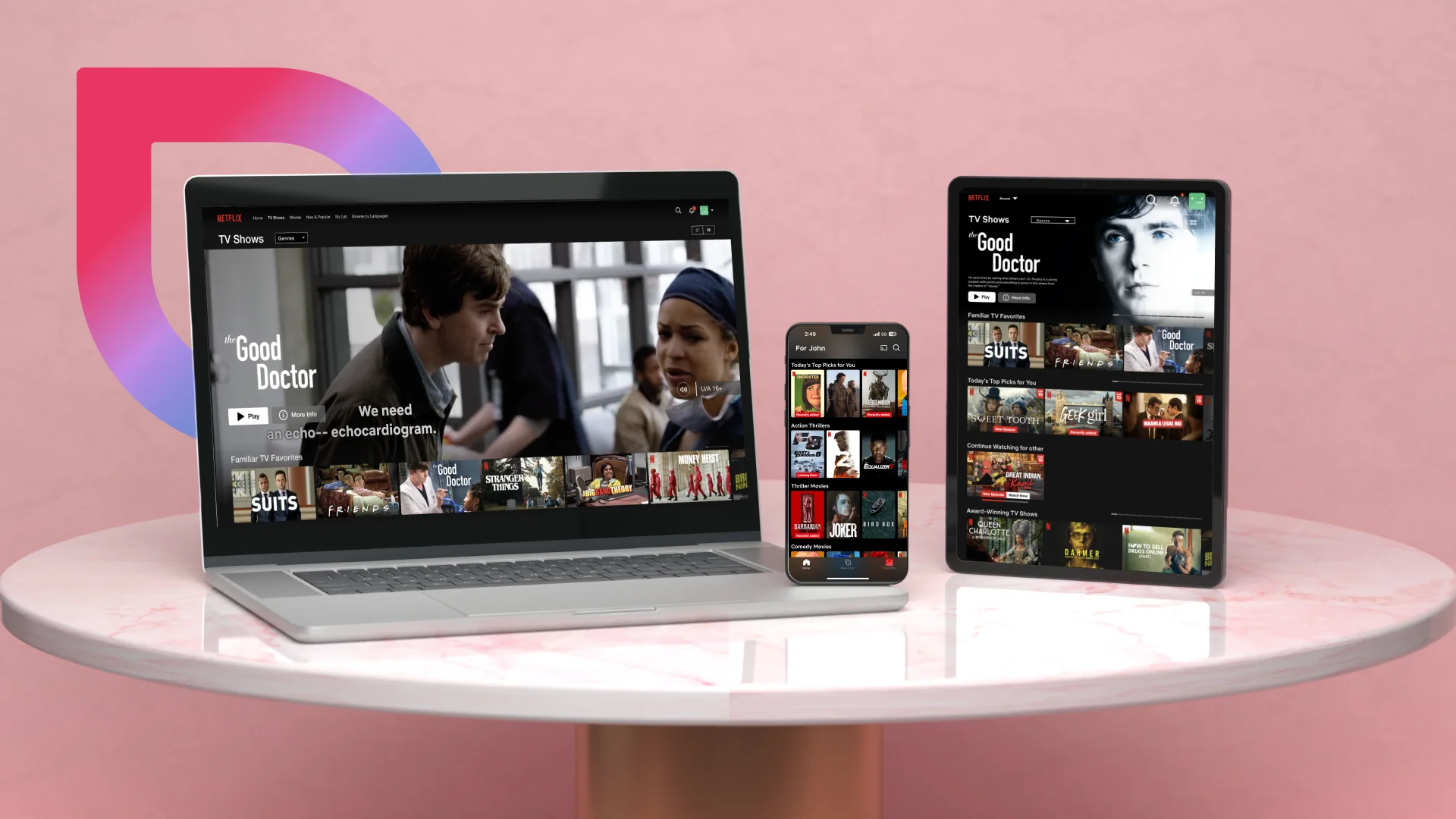15 Common Mobile App Development Mistakes and How to Avoid Them
- Mobile
- May 12, 2024
Mobile app development is a complex and intricate process involving various aspects, from selecting technology to assembling the development team and beyond. Mistakes can occur at each phase of the mobile app development lifecycle, potentially leading to significant business consequences. This blog outlines the most common mobile app development mistakes, their impacts, and tips to avoid them.
More than 5,000 flights across various countries were canceled, Windows systems displayed the classic blue screen, supermarkets experienced payment issues, billboards in Times Square went blank, general practitioners couldn’t access patient records, taxi drivers faced problems with card payments, and even members of the Mercedes F1 team sporting CrowdStrike’s logo on their T-shirts encountered PC issues!
The headlines kept flooding in, showcasing the widespread chaos.
All this GLOBAL HAVOC started from a SINGLE (seemingly insignificant) IT UPDATE!
Elon Musk aptly called it the “Biggest IT fail ever.“
All of this was triggered by a minor logic error caused upon rolling the sensor configuration updates, or ‘Content Update,’ for CrowdStrike’s Falcon platform on Windows systems.
Now, let’s look at how these updates affected CrowdStrike, a strong global brand in cybersecurity:
- Shares fell by over 20%, wiping off approximately $16 billion in market value, reflecting investor’s concerns regarding the company’s reliability
- Negative reviews lead to reputational damage
- Potential customer churn due to diminishing trust in the company’s offerings
- The company may land in legal liabilities or challenges
- Elevated operational costs associated with crisis management
One common discussion among the developer community is that “they should have conducted comprehensive testing across various devices, operating systems, and network conditions.”
This global IT outage incident demonstrates how a seemingly minor logic error can have catastrophic consequences.
Now, imagine a similar development mistake impacting mobile devices. The situation would likely be even worse due to the higher penetration of smartphones compared to PCs.
This incident clearly highlights the importance of knowing and avoiding mobile app development mistakes to save your brand from such damage and the impact that mistakes may have on your customers.
Top 15 Mobile App Development Mistakes and How to Avoid Them
Whether you’re launching a new app or optimizing an existing one, understanding common pitfalls is crucial for success. Here are some of these mistakes and tips to avoid them:
1. Not Building a Minimum Viable Product (MVP)
Not having an MVP (a basic version) means you are bound to develop a full-fledged mobile app for the finalized app concept. You have no idea insight into the app concept’s market viability or whether it would be received, the way you want or expect it to be, by your target audience.
Imagine investing millions of dollars in developing an app idea you believe is revolutionary, only to discover that the audience does not perceive it the same way upon release. This scenario underscores the importance of an MVP in mobile app development.
This common mistake in mobile app development can lead to missed user feedback opportunities, increased development costs, a higher risk of failure, and delayed market entry.
How to sidestep MVP development mistakes?
Here are some tips to avoid MVP-related mistakes in mobile app development:
- Identify and focus on the fundamental features that address user needs and provide value.
- Release the MVP to a selected group of users to gather initial feedback and insights.
- Use the MVP to evaluate whether your app idea has traction and potential market demand
- Utilize feedback from the MVP to make informed improvements and enhancements to your app
- Expand and add features based on validated user needs and preferences
Whether you have a concrete idea or need help shaping your concept, our team of experienced mobile app developers is here to assist you with custom MVP development services throughout every stage of the process.
2. Choosing the Wrong Technology Stack
A tech stack (programming languages, frameworks, libraries, tools, etc.) is the backbone of mobile apps, as it would play a crucial role in supporting the future aspects of your app in terms of development.
For instance, if you choose a tech stack for your eCommerce app that is not optimized for handling high traffic or complex simultaneous transactions, it would result in slow loading times, crashes, and hangs during peak shopping hours, such as sales.
An inappropriate selection of tech stack would result in poor performance, difficulty in scaling, limitations in supporting the latest features and integration, tough-to-find developers with the required skills, and more.
How to choose the right technology stack for your mobile app?
To ensure your tech stack lays a strong foundation for your app’s technical aspects, consider the following:
- Begin by listing your app’s functional and non-functional requirements to select a tech stack aligned with them.
- Research different technology stacks and compare their features, benefits, and limitations.
- Consult with experienced developers to gain insights into different tech stacks suitable for your development needs.
- Consider choosing a tech stack that supports scalability.
- Test the chosen tech stack for performance and compatibility with your target platforms (iOS, Android).
3. Choosing the Wrong App Development Team
To bring your app vision to life and execute it successfully, you need a team with the right expertise, transparent communication, experience with similar projects, and up-to-date knowledge of the tools and technologies you plan to use.
When hiring a team from a mobile app development company, businesses often make the following mistakes:
- Failing to thoroughly research the outsourcing company or potential development team in terms of technology expertise, experience, etc.
- Ignoring cultural and time zone differences
- Choosing a team that does not prioritize prompt communication
- Not seeking a detailed breakdown of costs, timelines, and deliverables in the proposals
- Opting for the cheapest option without considering quality and reliability
- Neglecting to establish clear legal agreements regarding IP rights, confidentiality, and other important aspects
These mistakes can lead to misaligned project goals, missed deadlines, unreasonable delays, higher costs than expected, potential security vulnerabilities, misunderstandings, a poor-quality app, a negative impact on brand reputation, and even legal issues or IP disputes.
How to choose the right mobile app development team?
Here are the considerations to make when choosing a right mobile app development company or developers:
- Review their past projects to gauge their capability and style
- Look for experience in specific technologies and platforms like Android, iOS, React Native, Flutter, etc.
- Understand their development methodology (e.g., Agile, Waterfall)
- Evaluate their responsiveness and how they handle feedback
- Confirm if they are willing to overlap their working hours with yours in case of a time zone difference
- Ensure you get a detailed breakdown of costs and make sure it fits your budget without compromising quality
- Check if the team can handle future scaling requirements as your app grows

4. Not Optimizing Mobile Apps for Performance
We all can relate to the frustration that comes from an app that takes ages to load, requires multiple clicks on buttons that do not lead anywhere, and sometimes uses excessive amounts of your mobile device’s battery for no reason. This is the result of a mobile app that is not optimized for performance.
How to avoid performance issues?
Here’s how you can ensure top-notch performance for your mobile app:
- Perform extensive testing on various devices and network conditions to identify performance bottlenecks.
- Write efficient code, optimize algorithms, and reduce the use of heavy resources like high-resolution images and large files.
- Optimize how the app handles data by using caching strategies, and more.
- Implement asynchronous programming techniques to handle tasks.
- Use analytics tools to continuously monitor the app’s performance.
- Ensure that your app’s UI is responsive and has smooth animations.
5. Neglecting Cross-Platform Compatibility
Even if the feel of native apps is unmatched, neglecting the need for a cross-platform app would only lead to a limited user base. This would ultimately become a business growth bottleneck, as a large number of either Android or iOS platform users would not be using your app. That’s a substantial amount of revenue you could have gained by opting for cross-platform mobile app development instead of native app development.
However, even when choosing cross-platform app development, businesses tend to make some mistakes that impact various aspects of the app, from UI to platform-specific issues.
How to optimize your app for different mobile platforms and devices?
Here are some considerations to ensure cross-platform compatibility for your app:
- Begin the development process with the intention to create an app that works seamlessly on multiple platforms
- Instead of choosing native technologies, use cross-platform frameworks like React Native and Flutter
- Conduct rigorous testing on various devices and operating systems to identify and address platform-specific issues
- Ensure that both versions of your app offer the same features and have a consistent user interface
- Do not miss out on taking on advantage of platform-specific features to enhance the user experience
6. Overcomplicating Features
Let’s include every possible feature in this app!”
This is a common request from business owners when developing a mobile app. The belief is that more functionality will attract more users.
However, this approach can often backfire.
Overloading an app with features can lead to a cluttered interface, slow performance, increased development time and costs, a steep learning curve for users, diluted core functionalities, and a higher maintenance burden.
How to avoid overcomplicating features?
Here are some mobile app development mistakes to avoid to ensure that you select the right number of features for your mobile app:
- Start with a Minimum Viable Product to focus on core functionalities
- Identify the features most critical for your target users through thorough research
- Use an iterative process to develop and release features gradually
- Ensure that any new feature integrates seamlessly, maintaining a clean, intuitive, and user-friendly design
- Regularly gather feedback to understand user interactions to make informed decisions about adding or removing features
7. Writing Inefficient or Poorly Structured Code
Creating code that is not optimized for readability and maintainability can lead to performance bottlenecks, especially as user growth occurs. Mistakes such as redundant or unnecessary operations, poor code organization, and lack of proper documentation contribute to a poor code structure.
In addition to performance bottlenecks, this can result in increased loading times, longer development cycles, higher maintenance costs, and difficulty in scaling the app.
How to ensure proper coding structure?
Here is how you can achieve a robust and clean coding structure for your mobile app:
- Follow coding standards and best practices
- Regularly review code to identify inefficiencies and improve code quality
- Continuously refactor the code to improve its structure and efficiency
- Implement automated testing to catch performance issues and bugs early in the development process
8. Poor Third-party API Integration
From social media and maps to payment gateways, analytics tools, and other third-party APIs, businesses leverage these services to enhance functionality in their mobile apps. However, insufficient, insecure, or faulty API integration can lead to performance issues, security vulnerabilities, functionality failures, and more.
How to avoid poor third-party API integration?
To help you avoid these pitfalls, here are some tips for ensuring successful third-party API integration:
- Research and select APIs from reputable providers to ensure reliability and robust support
- Verify that the API provider follows best practices for security, including encryption and regular updates
- Conduct extensive testing of the API integration in various scenarios to identify potential issues before deploying the app
- Design your app with fallback options in case the API service is unavailable
- Regularly monitor the API’s performance and keep an eye on any updates or changes from the API provider
If you are planning to develop an API, explore our blog on the ultimate guide to API development to learn about the types of APIs, examples, best practices, and more.
9. Not Planning for Scalability
Whether it’s ChatGPT, Pokémon Go, or any app that experienced rapid popularity, many struggled because their tech teams were not prepared for such a massive influx of users. This often led to server crashes and connectivity issues.
While it’s natural not to expect overnight success, it’s essential to prepare for a gradual increase in user traffic, data volume, and transactions. An app can also grow in terms of features, not just users and data.
Neglecting the need to plan for future growth can lead to challenges such as failure to scale, limited growth opportunities, and performance issues.
How can you plan for the future growth of your mobile app?
Here are some strategies to help you effectively plan for your app’s growth:
- Choose a scalable architecture that can handle increased load without performance degradation
- Perform load testing during the development phase to simulate high-traffic conditions
- Design your app using microservices architecture, where different components of the app run as independent services
- Utilize database optimization techniques such as indexing, caching, and database sharding
- Implement monitoring tools to continuously track app performance, user load, and system health
10. Not Implementing Proper Security Measures
We have all heard news about companies experiencing data leaks and websites being hacked.
One recent incident involved the crypto exchange platform WazirX, which faced a cyber attack where attackers stole $230 million worth of user funds! This is just one consequence of inadequate security. Security vulnerabilities can lead to data breaches, operational disruptions, legal consequences, and more.
How can you secure your mobile app?
Here are some key security best practices to help you secure your mobile app effectively:
- Use strong encryption algorithms to protect data both in transit and at rest
- Employ multi-factor authentication (MFA) and robust password policies
- Conduct regular security audits and vulnerability assessments
- Adhere to industry best practices and security guidelines
- Ensure that your development team is well-versed in security best practices
- Be aware of and comply with relevant data protection regulations
11. Lack of Testing
In the previous mistakes, one common theme we’ve identified is the importance of testing—whether it’s cross-platform compatibility, API integration, coding structure, performance optimization, and more. Testing various aspects of the app ensures that it functions correctly across different devices, operating systems, and usage scenarios.
Failing to conduct comprehensive testing can result in poor user experience, increased app churn, security vulnerabilities, and other issues.
How to avoid mobile app testing mistakes?
Here is how you can ensure your mobile app testing is effective and comprehensive:
- Conduct various types of testing, including functional, performance, usability, security, compatibility testing, and more
- Leverage automated testing tools to speed up the testing process
- Test the app on multiple devices and operating system versions
- Release a beta version of the app to a select group of users to gather feedback
12. Ignoring User Feedback
Ultimately, it’s about the users who are engaging with your product or service through your mobile app. They play a critical role in every phase of the mobile app development process, from discovery to testing. Ignoring user feedback prevents you from gaining insights into how real users interact with your app, what issues they encounter, and what features they find useful or lacking.
Neglecting user feedback can become a significant roadblock to making your app user-centric. This oversight can negatively impact the app’s usability and adoption.
How to use user feedback effectively in your app development process?
Here are some tips to ensure you effectively gather and implement user feedback in your mobile app development process:
- Firstly, provide users with easy ways to submit feedback, such as in-app surveys, feedback forms, or customer support channels
- Conduct usability tests and gather feedback from real users throughout the development process to make iterative improvements to the app
- Use analytics tools to track user behavior, identify pain points, and understand how users interact with your app
- Address the most critical issues and make changes based on user input to enhance the app’s overall experience
13. Neglecting App Store Optimization (ASO)
ASO plays a critical role in your app’s visibility and success. However, many businesses seem to be either unaware of it or neglect it while rapidly launching their mobile app into the market.
If your mobile app is not optimized for app store listings, potential users may not even discover it. In addition to reduced visibility, this can result in lower download rates, poor user acquisition, increased marketing costs, and more.
How to optimize your mobile app for the App Store?
Here are solutions you can implement to optimize your mobile app for the App Store:
- Incorporate keywords that potential users might use to search for apps like yours into your app’s title, description, and metadata
- Create a compelling app title and description that clearly conveys your app’s value proposition while incorporating relevant keywords
- Invest in high-quality app icons and screenshots that showcase your app’s features and functionality
- Continuously monitor and update your app store listing based on user feedback, performance metrics, and more
14. Unplanned Market Launch
Launching an app without a proper strategy or preparation is akin to dreaming of a world tour without a clear plan—full of ambition but lacking direction. Without a structured approach, your team might miss essential marketing opportunities and fail to establish a clear timeline or roadmap for achieving milestones throughout the app development process.
As a result, you risk missing out on strategic partnerships, market positioning, and peak user engagement opportunities. Your app may also face issues like bugs, crashes, or instability, leading to a poor user experience and diminished visibility.
How can you prepare for a successful market launch?
Here are key tips to avoid common app development mistakes and ensure a successful market launch:
- Outline every step of the launch process, including pre-launch marketing, beta testing, and post-launch support
- Create and execute a detailed marketing plan that includes promotions, social media campaigns, and PR strategies
- Set up a dedicated support team and system to handle user queries and issues effectively
- Define clear objectives and a timeline for the launch
To maximize the impact of your mobile app upon launch, be sure to read our blog, top mistakes to avoid before and after a mobile app launch, for additional insights into critical mistakes to avoid both pre-launch and post-launch.
15. Underestimating Total Mobile App Development Costs
Mobile app development costs can range from $5,000 to over $200,000, depending on the app’s complexity. Factors influencing these costs include the choice of platform, the number and complexity of features/functionalities, the expertise and location of the development team, the team’s engagement model, marketing expenses, long-term updates, and more.
Businesses often underestimate the importance of considering all these aspects, which can significantly impact the total cost. Failing to ensure that your app development fits within your budget may lead to project delays, quality compromises, unexpected expenses, financial strain, and other issues.
How can you avoid miscalculating the total cost of development?
Here’s how you can ensure a better understanding of mobile app development costs:
- Allocate a portion of the budget for unforeseen expenses
- Divide the project into phases and estimate costs for each phase
- Develop a comprehensive budget that includes all aspects of the app development lifecycle
- Work with experienced developers and financial advisors to create a realistic budget
- Continuously monitor the project budget and expenses to ensure that the project stays on track and adjust as necessary
With these tips, you would be able to get an approximate cost estimation associated with developing your mobile app. To future reduce it, read our blog on how to reduce mobile app development cost?
Transforming Ideas into Cutting-Edge Mobile Apps With MindInventory
At MindInventory, we bring your mobile app ideas to life with cutting-edge technology and innovation. We offer a comprehensive suite of mobile app development services, covering every aspect from conceptualization and development to testing and post-launch maintenance.
You can hire skilled mobile app developers from our team, experienced in various mobile technologies and frameworks, including Android, Swift, React Native, Flutter, and more. Our expertise also extends to integrating advanced technologies such as AI/ML, cloud computing, and AR/VR to enhance your app’s functionality and user experience.
Ready to transform your app idea into a market-leading product? Contact us today to discuss your mobile app development needs and discover effective solutions to achieve your business goals.
FAQs
By avoiding common mobile app development mistakes as mentioned above, businesses can benefit in numerous ways, including cost efficiency, timely development, efficient resource utilization, reputation management, competitive advantage, and more.
The biggest challenge faced by mobile app developers is ensuring the app’s performance and functionality across various devices and operating systems. Mistakes such as choosing the wrong technology stack, inadequate testing, and poor planning can lead to performance issues and user dissatisfaction.
Along with a mobile app development guide, we provide a comprehensive suite of resources, including blogs, case studies, and insights from our developers, all available on our website. These materials will help you stay informed about the latest technology and industry trends. In addition to our resources, you can refer to the official documentation of the technologies and tools you use for the most accurate and detailed information on updates and best practices.













